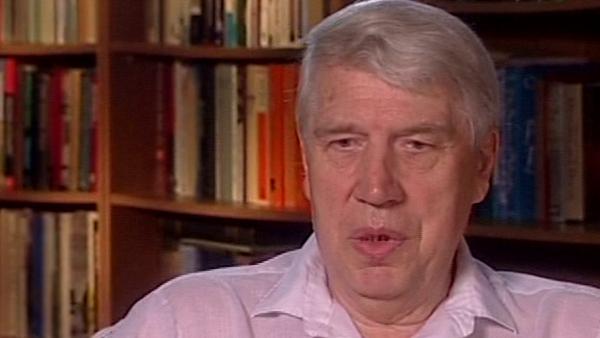NEXT STORY

Research into how speciation occurs in Lake Victoria
RELATED STORIES

NEXT STORY

Research into how speciation occurs in Lake Victoria
RELATED STORIES



This was for humans, so what about other species? We took one example, which is perhaps the best known example of species where one could assume that indeed the species might have arisen from a very small number of individuals. These are the famous Darwin's finches. They are finches that... birds that live on the various Galapagos Islands that are... that appear to be related to one another and appear, or were postulated, to have originated from a finch that flew to the islands, which are thousands of kilometres... a thousand... hundred of kilometres distant from South America. That they originated actually in South America, perhaps in Ecuador, and got to the islands and then started a population from which the different species... of which there are several now, originated. So Akie Sato and I and with the help of Colm O'hUigin and several other colleagues in our institute, and in collaboration with Rosemary and Peter Grant in the United States, we looked at the MHC polymorphism in this species. The specific project on the number of founding individuals was originally started by Vladimir Vincek who was in... started with me in Tübingen but then I set up a laboratory in Miami also and he then continued the project in the United States, and we did the same thing. We identified the MHC in these birds and determined their polymorphism and compared different species of the Galapagos finches and from that we then calculated the number of individuals that might have been in the ancestral population.
It turned out that it was not a single finch, it was not a pair of finches, it was a flock of finches that must have flown from... all the way from South America to the Galapagos Islands and founded all the different species that are now there. So again, the evidence was very clearly not supporting the common view of speciation that a pair of finches or a pregnant female can fly and then start a new species on an island... remote island. Extending these studies from the MHC to other genes, in particular mitochondrial DNA, was then taken up by Akie Sato. The main question that then remained was whether the species were really originating from a single species or whether there were several different contributors to the founding population that got to the Islands at different times. So she characterised their DNA... mitochondrial DNA, and was able to establish a tree, again with the help of Colm O'hUigin to show that the finches were on Galapagos Islands, were indeed as the molecular biologists, phylogeneticists say were of monophyletic origin. That means they all fell into a single cluster on a tree if you studied finches, not only from Galapagos but from other birds in that case, they formed a single cluster, so it seemed that indeed there was perhaps only one founding event, and from this the species then arose. Akie Sato then continued with the project and was able to actually identify the closest relative of the Darwin finches in South America in Ecuador and... so to show that they indeed came from that region and that the ancestor of the species came from that region.
Born in 1936, Jan Klein is a Czech-American immunologist who co-founded the modern science of immunogenetics – key to understanding illness and disease. He is the author or co-author of over 560 scientific publications and of seven books including 'Where Do We Come From?' which examines the molecular evolution of humans. He graduated from the Charles University at Prague in 1955, and received his MS in Botany from the same school in 1958. From 1977 to his retirement in 2004, he was the Director of the Max Planck Institute for Biology at Tübingen, Germany.
Title: Challenging the origin of the Darwin finches
Listeners: Colm O'hUigin
Colm O'hUigin is a senior staff scientist at the US National Cancer Institute. He received his BA, MSc and PhD at the Genetics Department of Trinity College, Dublin where he later returned as a lecturer. He has held appointments at the Center for Population and Demographic Genetics, UT Houston, and at the University of Cambridge. As an EMBO fellow, he moved in 1990 to the Max Planck Institute for Biology in Tübingen, Germany to work with Jan Klein and lead a research group studying the evolutionary origins of immune molecules, of teeth, trypanosomes and of species.
Tags: Ecuador, finch, finches, Darwin finches, Galapagos Islands, MHC polymorphism, speciation, Akie Sato, Peter R Grant, B Rosemary Grant, Colm O'hUigin, Vladimir Vincek, Charles Robert Darwin
Duration: 5 minutes, 52 seconds
Date story recorded: August 2005
Date story went live: 24 January 2008